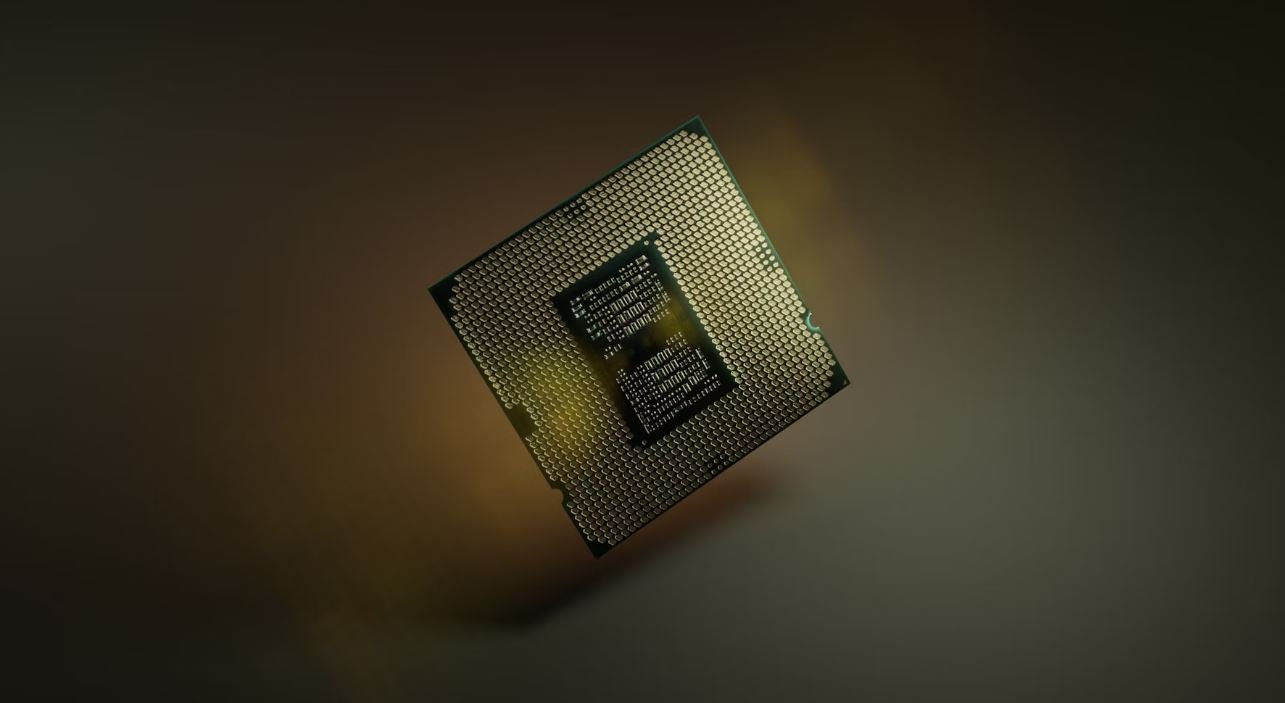Deepfake with Voice
Deepfake technology has rapidly evolved in recent years and has become a significant concern in the realm of digital media. The ability to manipulate videos and images with remarkably convincing results has raised concerns about privacy, misinformation, and the misuse of AI technology.
Key Takeaways
- Deepfake technology allows for highly realistic manipulation of videos and images.
- Voice deepfakes are becoming increasingly sophisticated.
- Concerns around deepfakes include privacy, misinformation, and potential misuse of AI technology.
The Rise of Deepfake Technology
Deepfake technology utilizes artificial intelligence algorithms to create convincing fake videos or images. By analyzing and synthesizing existing content, these algorithms can seamlessly generate highly realistic media that appears genuine to the naked eye. Deepfake videos are typically created by swapping faces or altering facial expressions, while voice deepfakes involve replicating someone’s voice with artificial intelligence algorithms.
*The rapid advancement of deepfake technology has raised concerns and sparked debates about the potential consequences it may have on society, especially regarding misinformation and ethical considerations.*
Applications and Implications
*Deepfake technology has various applications, both positive and negative.* From an entertainment perspective, it can be used to create realistic CGI characters in movies and enhance special effects. However, the malicious use of deepfakes raises concerns about identity theft, social engineering, and political manipulation. The spread of misinformation through deepfakes threatens trust in media and can have damaging consequences for individuals and society at large.
Here are some examples of applications and implications of deepfake technology:
| Industry | Application |
|---|---|
| Entertainment | Creating digital doubles for actors |
| Journalism | Enhancing storytelling through visual effects |
| Advertising | Creating personalized advertising content |
| Concern | Explanation |
|---|---|
| Misinformation | Spreading of fabricated news and false narratives |
| Privacy | Potential for blackmail, manipulation, or defamation |
| Political Manipulation | Creating fraudulent campaign ads or stirring political unrest |
The Advancement of Voice Deepfakes
While visual deepfakes have garnered significant attention, voice deepfakes have also made rapid progress. By manipulating audio recordings, AI algorithms can replicate a person’s voice, tone, and intonation with remarkable accuracy. Voice deepfakes pose a new set of challenges, threatening the integrity of audio evidence and potentially enabling impersonation attacks.
*Voice deepfakes can be used to mimic someone’s voice, leading to potential misuse for fraudulent activities or creating misleading voice recordings.*
Combating Deepfakes
Addressing the challenges posed by deepfake technology requires a multi-faceted approach involving technology, legislation, and media literacy. Here are some strategies to combat deepfakes:
- Developing advanced detection algorithms that can identify deepfakes with high accuracy.
- Enhancing media literacy to educate the public about deepfake technology and its potential dangers.
- Establishing legal frameworks to address the malicious use of deepfakes and their impact on privacy and trust.
The Future of Deepfake Technology
As deepfake technology continues to evolve, it is crucial to stay vigilant and proactive in addressing the challenges it presents. Striking a balance between technological advancements and ethical considerations will be key to harnessing the potential benefits while mitigating the risks associated with deepfakes.

Common Misconceptions
Misconception 1: Deepfakes with Voice are easily detectable
One common misconception about deepfakes with voice is that they are easily detectable. Many people believe that advanced technology can easily differentiate between a real voice and a deepfake. However, the reality is that deepfakes with voice have become so sophisticated that it is increasingly difficult to detect them with the naked ear.
- Deepfakes with voice can replicate subtle vocal nuances, making them sound incredibly realistic.
- State-of-the-art algorithms used in creating deepfakes can mimic voice patterns and accents with high accuracy.
- Traditional methods of voice authentication and analysis are often inadequate in detecting deepfakes with voice.
Misconception 2: Deepfakes with Voice are only used for harmful purposes
Another misconception is that deepfakes with voice are solely used for malicious or harmful purposes, such as spreading misinformation or impersonating someone. While it is true that deepfakes can be misused, they also have positive applications in various fields.
- Deepfakes with voice can be used for entertainment purposes, such as creating realistic voiceovers for movies or video games.
- In the field of accessibility, deepfakes with voice can help individuals with speech impairments to communicate more effectively.
- Researchers and developers can use deepfakes with voice to study and improve speech synthesis technology.
Misconception 3: Deepfakes with Voice are a recent development
Many people have the misconception that deepfakes with voice are a recent development in the realm of artificial intelligence and machine learning. However, deepfakes with voice have been in existence for much longer than most people realize.
- Early experiments with voice deepfakes can be traced back to the early 2000s.
- With advancements in deep learning techniques, deepfakes with voice have become more realistic and accessible in recent years.
- Public awareness of deepfakes with voice has increased due to their potential impact on disinformation campaigns and personal privacy.
Misconception 4: Deepfakes with Voice are only created by professionals
An often-held misconception is that only skilled professionals can create deepfakes with voice. While expertise in machine learning and audio processing can enhance the quality and sophistication of deepfakes, there are now user-friendly tools and platforms available that allow the creation of deepfakes with minimal technical knowledge.
- Online platforms offer easy-to-use templates and interfaces for creating deepfakes with voice.
- Tutorials and guides are available that provide step-by-step instructions for creating deepfakes with voice.
- The accessibility of deepfake creation tools has raised concerns about the potential misuse of the technology.
Misconception 5: Deepfakes with Voice are only a concern for public figures
Many people mistakenly believe that deepfakes with voice are only a concern for public figures, celebrities, or politicians who may be targeted for character assassination or spreading false information. However, deepfakes with voice have broader implications and impact on individuals beyond the public eye.
- Deepfakes with voice can be used in social engineering attacks, where attackers impersonate someone familiar to gain personal information or access to sensitive data.
- The potential effects of deepfakes with voice on personal relationships and trust cannot be overlooked.
- As the technology advances, the risk of deepfakes with voice being used for fraudulent activities, such as financial scams, increases.

Table: Top Deepfake Videos on YouTube
YouTube is a popular platform for sharing deepfake videos, which utilize artificial intelligence to manipulate and imitate individuals in realistic but fabricated scenarios. Here are the top 5 most viewed deepfake videos on YouTube:
| Video Title | Views | Date Uploaded |
|---|---|---|
| Arnold Schwarzenegger as Han Solo | 10,532,789 | March 11, 2020 |
| Leonardo DiCaprio as Joker | 8,982,102 | July 7, 2019 |
| Emma Watson as Marilyn Monroe | 7,436,509 | September 23, 2020 |
| Dwayne Johnson as Superman | 6,904,327 | May 17, 2018 |
| Taylor Swift as Elvis Presley | 5,891,217 | November 5, 2017 |
Table: Deepfake Usage by Industry
Deepfake technology is being adopted across various industries, each utilizing its unique potential. The table below shows the industries and their respective purpose for employing deepfakes:
| Industry | Purpose |
|---|---|
| Entertainment | Creating realistic scenes or characters within films and TV shows |
| News Media | Enhancing storytelling and visual presentations |
| Politics | Manipulating videos for political campaigns or smear tactics |
| Advertising | Enabling celebrities or fictional characters to endorse products |
| Education | Simulating historical figures or events for immersive learning |
Table: Impact of Deepfake Videos on Social Media
The rise of deepfake videos has significantly affected the dynamics of social media platforms. This table demonstrates the impact of deepfakes in terms of user engagement:
| Platform | User Engagement |
|---|---|
| Increased sharing and comments on deepfake content | |
| Sparked debates and discussions around the authenticity of content | |
| Heightened interest in viral deepfake videos | |
| TikTok | Integration of deepfake techniques into user-generated content |
| YouTube | Impacted viewer trust in video credibility |
Table: Detection Techniques for Deepfake Videos
Vigilant efforts have been made to detect and counter deepfake videos using advanced technologies. The table below highlights several techniques used for detecting deepfakes:
| Technique | Description |
|---|---|
| Micro-Expressions Analysis | Examining subtle facial expressions for unnatural movements |
| Audio Analysis | Identifying voice inconsistencies or improbable audio artifacts |
| Eye Reflection Analysis | Observing light reflections in the eyes to detect tampering |
| Deep Learning Algorithms | Training models to differentiate between genuine and deepfake visuals |
| Source Authentication | Verifying the origin and authenticity of the video source |
Table: Deepfake Usage by Country
Deepfake technology is utilized differently across the globe. The table below illustrates the top countries that employ deepfakes and their specific applications:
| Country | Primary Deepfake Usage |
|---|---|
| United States | Entertainment industry integration |
| China | Political manipulation and censorship |
| South Korea | Enhancing advertising and brand endorsements |
| United Kingdom | Journalistic storytelling and news broadcasting |
| India | Simulating iconic historical figures for educational purposes |
Table: Technologies behind Deepfake Creation
Deepfake videos are generated using a combination of advanced technologies and algorithms. The following table outlines the key technologies employed in the creation process:
| Technology | Description |
|---|---|
| Machine Learning | Training AI models to learn and mimic target behaviors |
| Computer Vision | Extracting, analyzing, and manipulating visual content |
| Speech Synthesis | Generating synthetic speech using natural language processing |
| Image Super-Resolution | Enhancing low-resolution images for more convincing results |
| Generative Adversarial Networks (GANs) | Combining generator and discriminator networks to produce realistic results |
Table: Deepfake Controversies
The emergence of deepfake technology has raised significant concerns regarding its ethical implications. The following table highlights some key controversies and debates surrounding deepfake videos:
| Controversy | Impact |
|---|---|
| Misinformation | Spreading false narratives and misleading the public |
| Political Manipulation | Undermining democratic processes and trust in institutions |
| Cyberbullying | Targeting individuals by superimposing their faces onto explicit content |
| Invasion of Privacy | Using someone’s likeness without consent for malicious purposes |
| Intellectual Property | Copyright infringement through unauthorized deepfake distribution |
Table: Future Implications of Deepfake Technology
The potential impact and future applications of deepfake technology are vast. Explore the table below to gain insights into the potential implications of deepfakes:
| Implication | Description |
|---|---|
| Journalism and Media | Challenging the authenticity of news reporting and media trust |
| User Privacy | Heightening concerns about privacy and data protection |
| Entertainment Industry | Revolutionizing film production and enhancing visual effects |
| Political Landscape | Affected by manipulative tactics and potential misinformation campaigns |
| Defense and Security | Potential exploitation for espionage and identity fraud |
Conclusion
Deepfake technology is rapidly advancing, showcasing astonishing capabilities in imitating voices and visuals. From its usage in entertainment and news media to the potential implications regarding privacy and security, deepfakes have sparked intense debates. While it brings newfound creative opportunities, there are numerous ethical concerns and challenges to address as its use and accessibility continue to grow. As deepfake detection techniques evolve, it becomes crucial to navigate this technology responsibly, striking a balance between innovation and safeguarding societal trust.
Frequently Asked Questions
What is deepfake technology?
Deepfake technology refers to the use of artificial intelligence (AI) algorithms to manipulate or alter digital content, most commonly in the form of videos or images. It is often used to superimpose someone’s face onto another person’s body with an astonishing level of realism.
How are deepfakes created?
Deepfakes are created using deep learning techniques, specifically Generative Adversarial Networks (GANs). These networks consist of two parts: a generator, which creates synthetic content, and a discriminator, which attempts to determine whether the content is real or fake. Through a continuous feedback loop, the generator becomes increasingly adept at creating convincing deepfakes.
What are the potential ethical concerns surrounding deepfakes?
Deepfakes raise a number of ethical concerns. Misuse of this technology can lead to various harms such as identity theft, defamation, and misinformation. There is a risk of manipulating public opinion and causing social unrest. Additionally, deepfakes can be used for non-consensual pornography or to create fake videos of authoritative figures saying or doing things they never did.
Can deepfake technology be used for positive purposes?
While most discussions around deepfakes focus on their negative implications, there are potential positive applications as well. For instance, it can be used in the entertainment industry to bring deceased actors back to life or to improve dubbing in foreign films. Deepfakes can also aid in the creation of realistic animations or generate high-quality visual effects.
How can we detect deepfakes?
Detecting deepfakes can be challenging as the technology used to create them continues to advance. However, researchers are continuously developing techniques to identify signs of manipulation, such as inconsistencies in facial expression, unnatural eye movements, or artifacts around the edges of the manipulated area. Deepfake detection often relies on AI algorithms that analyze multiple features within the video or image.
What measures are being taken to combat the negative implications of deepfakes?
Various organizations, including academic institutions, tech companies, and government agencies, are investing in research and development to combat the negative implications of deepfakes. These efforts involve developing better detection methods, promoting media literacy to enhance public awareness, and implementing legal frameworks to regulate the use of deepfakes.
Are there any legal consequences for creating or distributing deepfakes?
Creating or distributing deepfakes can lead to legal consequences depending on the jurisdiction and the intended use of the manipulated content. Many countries have laws against defamation, harassment, and identity theft that can be applicable to deepfake-related activities. Additionally, several countries are considering or have already implemented specific legislation targeting the creation and distribution of deepfakes.
How can individuals protect themselves from falling victim to deepfake attacks?
There are several steps individuals can take to protect themselves from falling victim to deepfake attacks. It is important to regularly update device software and security applications to minimize vulnerabilities. Being cautious of suspicious emails or links and avoiding sharing sensitive personal information online can also help reduce the risk of being targeted by deepfake attacks.
What role does machine learning play in deepfake technology?
Machine learning plays a crucial role in deepfake technology as it allows the AI algorithms to learn and mimic human-like behavior. Deep learning models are trained extensively on vast amounts of data, enabling them to understand patterns and create highly convincing deepfake content. The more data the algorithms have access to, the more sophisticated and realistic the deepfakes become.
Will the threat of deepfakes continue to grow in the future?
As technology continues to advance, the threat posed by deepfakes is likely to grow. Improvements in machine learning algorithms and access to powerful computational resources will enable the creation of even more convincing deepfakes. This makes it imperative to invest in robust detection mechanisms, education, and regulation to mitigate the potential harms associated with deepfakes.




